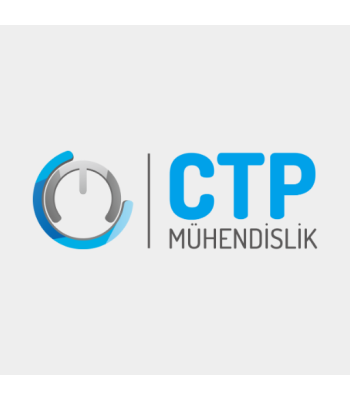While the automation system keeps the outlet water temperature steady, providing up to 50% energy saving
CTP Automation System;
a) 7 '' touch screen and PLC control system
b) Fan active passive values and graphics
c) Inlet and Outlet water temperature values and graphics
d) Remote monitoring feature (from tablet, phone and computer)
e) Working and standby balues for each fan
f) The present and past alarm statements
| Standard Towers | CTP Water Cooling Tower |
|
|
| SYSTEM WITHOUT AUTOMATION | CTP ENGINEERING AUTOMATION SYSTEM |
| Energy-saving Calculation | Energy-saving Calculation |
| All year without a control system Tower energy consumption running with 100% capacity: 24 hours x 365 days x 22 kW x 0,17 = $ 32,762 | Same diameter tower chimney can be driven with 15 kW with CTP engineering automation system. 24 hours x 365 days x 15 kW x 0.17 $ = $ 22,337 Annual Savings: $10.425 (for single cell) |
The steps, materials, and key considerations for setting up cooling tower automation with remote connectivity and access to historical data are as follows:
Steps for System Setup
- Sensors and Monitoring Equipment:
- Temperature Sensors: To measure water and air temperatures.
- Pressure Sensors: To monitor water pressure.
- Flow Sensors: To measure water flow rate and volume.
- Level Sensors: To monitor water levels.
- Energy Meters: To track energy consumption.
- Data Collection and Processing Unit:
- Programmable Logic Controller (PLC): Collects, processes, and controls the data.
- SCADA System: Used to visualise and analyse data; suitable for large systems.
- IoT Modules: Enable data sharing over the internet.
- Remote Access via the Internet:
- Web-Based Interface: Allows users to view data online.
- Mobile Application: Provides access through smartphones.
- VPN (Virtual Private Network): Ensures secure remote access.
- Storage of Historical Data:
- Database Management System (DBMS): Stores and manages data; systems like MySQL, PostgreSQL, or SQL Server can be used.
- Data Backup: Regular data backups prevent data loss.
- Alarm and Notification Systems:
- Alarm Modules: Detect abnormal conditions and send alerts.
- Notification Systems: Inform users via email, SMS, or mobile notifications.
- Security Measures:
- Encryption: Ensures data security.
- Authentication: Controls user access.
- Firewalls: Prevent unauthorised access.
- User Training and Support:
- Training Programs: To ensure users can operate the system efficiently.
- Technical Support: Provides assistance for potential issues.
Materials to Be Used
- Sensors and Monitoring Equipment: Should be selected from quality and reliable brands.
- PLC and SCADA Systems: Choose products that are reliable, user-friendly, and compliant with industrial standards.
- IoT Modules and Internet Hardware: High-quality modules should be used to ensure secure connections.
- Database and Backup Systems: Use systems that provide reliable and regular backups.
- Alarm and Notification Systems: Choose products that offer quick and effective alerts.
Key Points to Consider
- Data Security: Ensure all data is encrypted and securely stored.
- System Compatibility: Ensure that selected hardware and software are compatible.
- Energy Efficiency: Opt for systems that minimise energy consumption.
- User Interface: The interface should be user-friendly and easy to understand.
- Maintenance and Support: Regular maintenance and technical support plans should be established.

